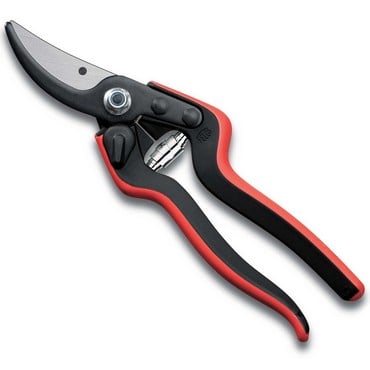Not a Merry Cherry!
We have had planted a cherry tree for about 3 years. It produces a few fruits but seems slow.
It was a present container grown and stands about 5ft high with branches spread about 2 to 3ft in dia. Is this normal?
Should we treat it in any way?
It is in a west facing garden near Lincoln.
Alan Parker
Many thanks for your recent message concerning your cherry tree which isn’t meeting your expectations. It’s notoriously difficult to diagnose what, if anything, is wrong with your tree but I’ve listed a few considerations below. I’d certainly recommend you feed the tree and apply a mulch around the roots which will we come onto later...
ROOTSTOCKS
Cherry trees are usually grown on Colt or Gisela 5 rootstocks; the former is semi-vigorous whilst the latter produces a semi-dwarfing specimen. It follows that a tree grown on a Colt rootstock will grow and develop more quickly and this may be the case with your tree; Gisela 5 grafted trees are more suitable for growing as a standard bush or pyramid however.
MAIDEN OR FEATHERED MAIDEN
Fruit trees are usually supplied in maiden whip or feathered maiden form. A maiden whip is a single shooted tree whilst a feathered maiden already has a number of side shoots, the beginnings of a framework of branches. Maiden whip trees take a year longer to develop as they have to produce branches before formative pruning can begin in earnest; again, this may be the reason for your cherry tree not performing a well as expected.
FORMATIVE PRUNING
The way a tree is pruned in its early life greatly influences the shape and rate of growth. You’ll need to decide which form the tree is to take and prune accordingly and it’s worth researching this practice. There are many online resource and handbooks giving guidance and you’ve got a little while to swot up as cherry trees – along with all stone fruits – are best pruned in the late spring to avoid a bacterial disease known as silverleaf.
FEEDING
Cherry trees are naturally greedy and should be fed in late winter every year. A general, well balanced fertilizer such as Growmore or Blood, Fish and Bone will provide the nitrogen, phosphorous and potassium (the latter essential for good fruit bud and fruit production) the tree requires and should be scattered over the root area around the base of the tree. Water in well and apply a mulch of well rotted manure or compost around the base of the tree to add further nutrients to the soil. You can feed with Blood, Fish and Bone throughout the growing season and keep the tree well watered, especially during dry spells.
You can also spray the tree with a Garlic Tree Wash throughout the growing season to improve vigour and health. There are a number of garlic-based tree sprays on the market and they improve the ability of the tree to fight off and recover quickly from pests and diseases.
To sum up, I think giving the tree a good feed as outlined above and generally giving it plenty of TLC should see an improvement in vigour and appearance. With some light summer pruning thrown in to, your cherry should pick up in no time!
I hope the above gives you a few ideas of how to best care for your tree but if you’ve any further questions or queries, please don’t hesitate to contact me. Many thanks once again for your enquiry and the best of luck with your gardening this year.
Kind Regards
Martin

























